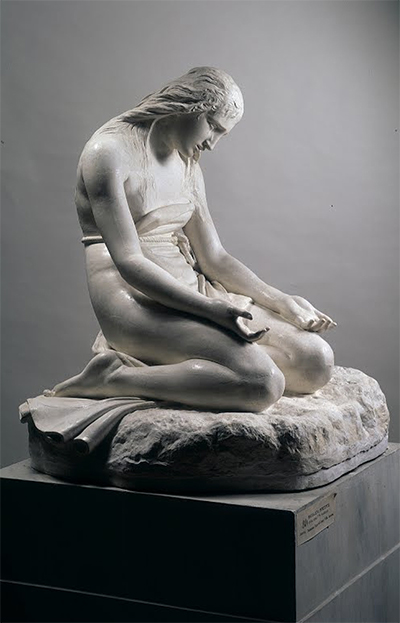Antonio Canova was an Italian neoclassical sculptor born on 1st November 1757 in the Venetian city of Possagno. He began his art work at quite a young age using craving marble.
He worked on mythological and ancient pieces which were inspired by the Baroque style. By 1800 he had become the most successful and well celebrated artist across Europe. His sculpture the Penitent Magdalene created in 1794-1796, is one of his greatest religious work. The art is displayed in Museo Agostiniano and it portrays the biblical story of Mary Magdalene in a humility posture that shows her sadness after death of Jesus. The unique details of the art shows how much time he invested in the statue and the suffering of Mary is brought out vividly. She is holding a bronze crufix and a skull is placed next to her.
The people in the 1800 had so much in common with the grief portrayed in the statue as during the time, there was war across France and people were grieving the loss of their loved ones. So many people lost their lives under Napoleon during his military campaigns. The art was commissioned by Guiseppi Pruili and later it was exhibited at a salon in Musee Napoleon where it became popular as people were restoring the church in France.
He came from a family of stone cutters, his father pietro Canova died in 1761 and he was left under the care of his grandfather Pasino Canova who was a stone cutter as well after his mother remarried. His grandfather specialized in sculpting the altars and had a lot of influence in his work. He worked under Giuseppe Bernardi for two years as an apprentice and later under Giovanni Ferrari in Venice before he joined the academy di Belle Arti di Venezia for his studies. In 1780, he went to Rome where he frequently studied and sketched the works of Michelangelo.
His time in Rome was quite successful and he spent his time working on different sculptures. He was also a painter though his pictures were not as popular as his sculptures. Most of his art we mainly on recreational and mythological subjects. He would hire workers who would help him in his work by craving the initial part of a marble. He never taught in any school but he would spend part of his wealth in helping so many young students. He died in Venice at the age of 64.
His other greatest work include:
- Psyche Revived by Cupid's Kiss (1787)
- Napoleon as Mars the Peacemaker (1802–1806)
- The Three Graces (1814–1817)
- Perseus Triumphant (1804–1806)




